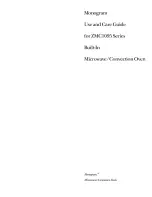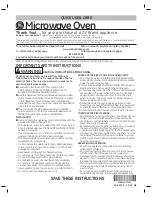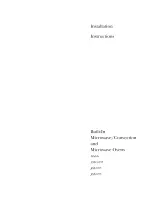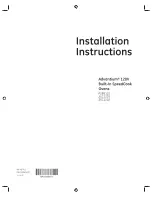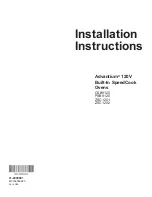
56
After cooking cycle the oven door, its internal glass, the
gasket and the area around the door perimeter may become
easily dirty due to greasy vapours coming out from the oven.
These operations must be done with the door glass cold,
without using abrasive detergents or rags.
1. Clean thoroughly the oven area along the door perimeter
as indicated in the following figure:
2. Clean along the rubber gasket;
G.10 Efficiency control of the discharge
system
Residues released during cooking, despite regular cleaning of
the cooking chamber, can encrust the external discharge pipe.
It is therefore essential to check the efficiency of the discharge
and to clean the external pipe as soon as there are signs of
obstruction. At least
once a year
, clean the drain pipe.
G.11
Condensate drip collector
The plastic drip collector at the bottom of the cooking chamber
façade ensures that the steams that condense as soon as the
door is opened are collected and discharged.
For hygiene reasons, clean it as follows:
1. Use water to clean regularly the drain pipe (“A“) of the drip
collector;
If the discharge is not uniform spray a neutral detergent
solution and let it melt the incrustations before cleaning
with water jet.
2. Remove the metal cover (“B“) and use the same system to
clean the single check valve (“C“);
3. Use regularly a pipe cleaner with nylon bristles (supplied
with the appliance, according to the model) to clean the
small gutter (“D“).
G.12 Food probe
Residues released during cooking, despite regular cleaning of
the cooking chamber, can encrust the food probe, altering the
temperature detection.
To ensure optimal operation of the oven with the food probe, it
is recommended to clean the food probe manually
every day
,
using lukewarm water and neutral soap, avoiding tying the
cable of the probe and rinsing with water.
IMPORTANT
Pay particular attention when handling the probe;
remember that it is a sharp object, therefore handle
it very carefully, even during cleaning.
G.13 Other surfaces
• Clean external glass, metal and plastic parts only with non-
aggressive detergents. Stop immediately using those
products if detecting any visual or tactile characteristic
change on surfaces and thoroughly rinse with water
(examples: glass becoming mat/scratched/other, or plastic
discoloring/melting/other, or metal showing rust/stains/
scratches). Carefully dry after rinsing.
IMPORTANT
As for the plastic handle, do not use detergents
containing sodium hypochlorite.
• Clean the stainless steel parts every day using lukewarm
neutral soapy water;
Rinse with plenty of water and dry thoroughly.
• Do not clean the stainless steel with steel wool, brushes or
scrapers in common steel, as they could deposit ferrous
particles which oxidize, causing rust spots;
D
C
B
A































